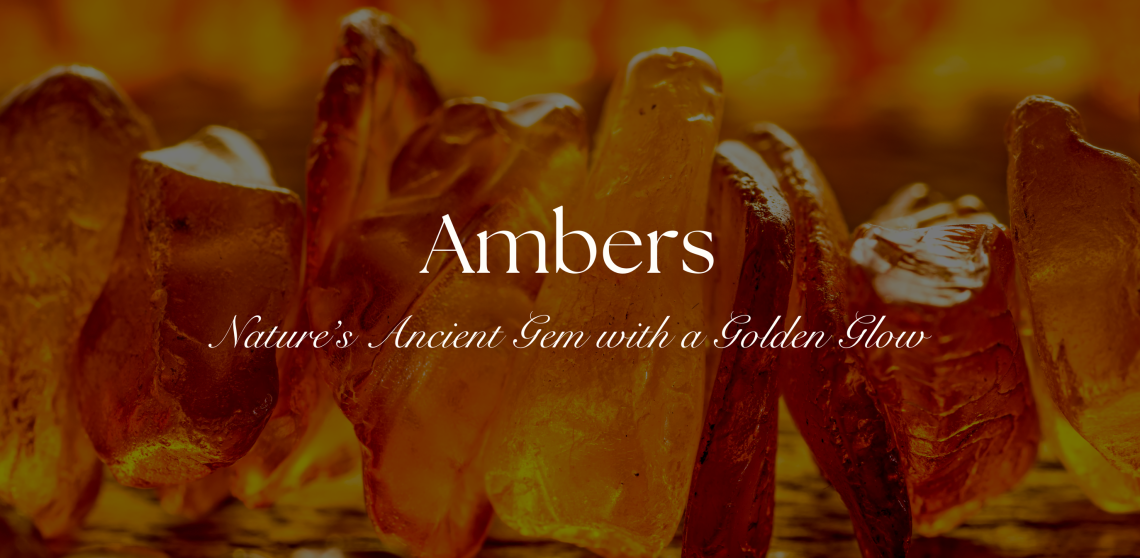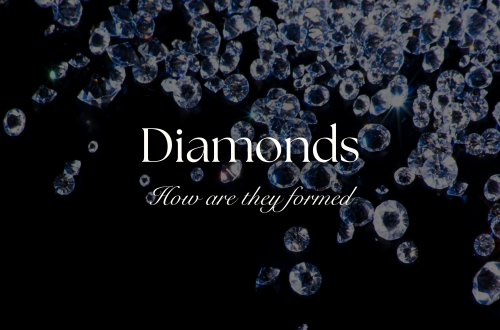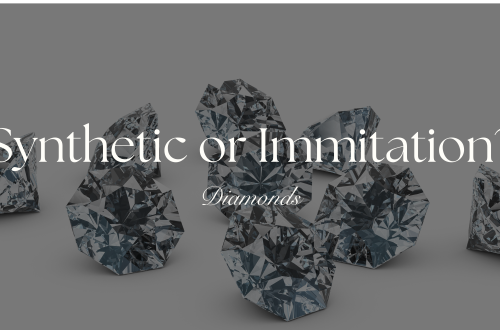Amber, often described as “frozen sunshine,” is fossilized tree resin that has captivated human imagination for millennia. Its soft, warm glow, occasional encapsulation of ancient life, and deep cultural symbolism have ensured its place in jewelry, art, and scientific discovery. But what truly makes amber so compelling, and why has it remained a treasured material across ages and cultures?
What Is Amber?
Unlike minerals, amber is the hardened resin of prehistoric trees, some dating back as far as 300 million years. Over time, under the effects of heat and pressure, resin undergoes molecular changes, transforming first into copal and eventually into amber, a process that can span millions of years. Chemically, amber is categorized into five classes based on botanical origin, with Baltic and Dominican ambers among the most recognized.
Amber is soft and warm to the touch, ranking 2 to 2.5 on the Mohs hardness scale. Its refractive index ranges from 1.5 to 1.6, and its density allows it to float in saltwater. While it can melt under high heat, above 250 degrees Celsius it breaks down into resin oils, underscoring its organic nature.
A Glimpse Into Ancient Worlds
One of amber’s most remarkable qualities is its ability to preserve fragments of ancient life. Insects, plant material, feathers, and even small shells have been found encased in amber, creating time capsules that allow scientists to study prehistoric ecosystems in extraordinary detail. These inclusions have fueled popular imagination, inspiring works like Jurassic Park, even though extracting viable DNA from amber remains within the realm of fiction.
Amber Through History and Culture
Amber’s use in human culture dates back to the Stone Age, with pieces discovered in Mycenaean tombs over 13,000 years old. For the Greeks, amber was thought to be tears of the sun, and its ability to produce static electricity when rubbed gave it the name elektron, the root of the word “electricity.” In Chinese culture, amber was seen as the essence of a tiger’s soul, while Romans and Vikings valued it for carvings and symbolic amulets.
Types and Sources
Baltic amber, found along the Baltic coast and in Kaliningrad, accounts for around 90 percent of the world’s amber supply. Dominican amber is valued for its clarity and rare blue fluorescence under UV light, while Burmese amber is known for its rich inclusions, though concerns over ethical sourcing due to conflict-related mining persist.
Crafting Amber and Identifying Imitations
Amber has been polished, heated, and pressed into jewelry and decorative objects for centuries, sometimes resulting in “pressed amber” or ambroid. Due to its value, amber is frequently imitated using copal, shellac, celluloid, or various plastics, but these imitations can often be detected through UV testing and chemical analysis.
Uses of Amber
Amber’s warm beauty has made it a staple in necklaces, rings, and beads, while its soft workability has allowed artisans to carve it into religious objects, smoking pipe mouthpieces, and decorative art since antiquity.
Beyond jewelry, amber has long been associated with healing properties in folk medicine, believed to ease pain and support digestive health, though modern medical guidance does not support these uses, particularly in the case of amber teething necklaces, which can pose safety risks.
In the scientific community, amber inclusions continue to provide valuable insights into Earth’s past ecosystems, including studies of dinosaur-era biodiversity using Myanmar amber. Amber has also held a place in fragrance production, once burned to create “oil of amber” for incense, though modern amber scents in perfumery typically come from materials like labdanum and benzoin.
Amber in Today’s Market
Today’s amber market blends traditional Baltic craftsmanship with contemporary design, attracting both classic collectors and modern jewelry enthusiasts. Ethical sourcing is an increasing concern, especially with amber sourced from conflict zones, pushing many buyers and retailers to prioritize transparency and responsible practices.
Digital marketplaces have expanded the amber trade, emphasizing authenticity verification, storytelling, and educational content to build trust with buyers.
Buying and Caring for Amber
For those looking to purchase amber, verifying authenticity is essential. Simple methods include UV light tests and observing whether the piece floats in saltwater, though professional lab analysis provides definitive results. Buyers are encouraged to inquire about sourcing practices to ensure ethical purchasing.
Amber requires gentle care. It should be cleaned with mild soap and warm water, avoiding harsh chemicals and ultrasonic cleaners. Storing amber in a soft cloth and keeping it away from heat will help preserve its beauty for generations.
The Enduring Charm of Amber
Amber’s appeal lies in its unique combination of historical depth, scientific significance, artistic beauty, and warm energy. Each piece tells a story, whether through the ancient insect frozen within its golden depths or through its centuries-long role as a symbol of protection and beauty. In a world that often feels transient, amber stands as a reminder of the vast passage of time and the enduring glow of nature’s artistry.





